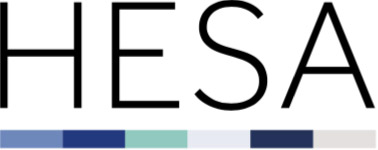Suggested graduate contact plan
Quick links: Suggested graduate contact plan | Other vital promotional periods | Communications materials
Providers play a vital part in the success of Graduate Outcomes. It’s important that providers are engaging with the cohort population directly in the build up to the contact period commencing. We know from our work looking at response rates, that engagement with the online survey is dependent on recognition of the Graduate Outcomes brand. Providers play a key role in legitimising the online survey via their own direct and trusted engagement routes.
To support providers in carrying out the suggested contact with graduates prior to being surveyed, we’ve created a simple contact plan to follow. This covers the suggested emails that providers should send to collect updated personal contact details and the recommended “warm up” contact shortly before the contact period starts.
These are based around the following points:
- 6 months after graduation / completion of the course
- Again at 12 months after graduation / completion of the course
- Two weeks before the start of the contact period
Under no circumstances should providers contact graduates once a cohort has commenced surveying. This is due to the risk of over-communication and the creation of potential bias. For more information about this, visit our operational FAQs. This shares more detail about what providers can / can't do during a cohort.
We’ve supplied a large number of promotional materials to help you carry out the warm up communications activity, including a suggested email template for use with the recommended emails. We’re keen to hear from providers who are getting success from this contact plan so we can share this best practice with the sector, and continually evolve it.
Providers are encouraged to adapt these materials to their needs but we ask that all contact made with graduates should, at a minimum, include the Graduate Outcomes logo to ensure you take the opportunity to establish brand awareness.
Suggested graduate contact plan
Below are the timings for the C22071 collection:
|
Collection |
Cohort |
End date of course |
Approx. 6 months post course completion |
Approx. 12 months post course completion |
2 weeks pre-survey warm up |
HESA contact period (surveying) - approx. 15 months post -course completion |
|---|---|---|---|---|---|---|
|
2022/23 C22071 |
Cohort A |
Between 1 August and 31 October 2022 |
March 2023 |
September 2023 |
From 17 November 2023 |
Between 1 December 2023 and 29 February 2024 |
|
2022/23 C22071 |
Cohort B |
Between 1 November 2022 and 31 January 2023 |
June 2023 |
December 2023 |
From 16 February 2024 |
Between 1 March and 31 May 2024 |
|
2022/23 C22071 |
Cohort C |
Between 1 February and 30 April 2023 |
September 2023 |
March 2024 |
From 18 May 2024 |
Between 1 June and 31 August 2024 |
|
2022/23 C22071 |
Cohort D |
Between 1 May and 31 July 2023 |
December 2023 |
June 2024 |
From 18 August 2024 |
Between 1 September and 30 November 2024 |
Below are the timings for the C23071 collection:
|
Collection |
Cohort |
End date of course |
Approx. 6 months post course completion |
Approx. 12 months post course completion |
2 weeks pre-survey warm up |
HESA contact period (surveying) - approx. 15 months post -course completion |
|---|---|---|---|---|---|---|
|
2023/24 C23071 |
Cohort A |
Between 1 August and 31 October 2023 |
March 2024 |
September 2024 |
From 18 November 2024 |
Between 1 December 2024 and 28 February 2025 |
|
2023/24 C23071 |
Cohort B |
Between 1 November 2023 and 31 January 2024 |
June 2024 |
December 2024 |
From 17 February 2025 |
Between 1 March and 31 May 2025 |
|
2023/24 C23071 |
Cohort C |
Between 1 February and 30 April 2024 |
September 2024 |
March 2025 |
From 19 May 2025 |
Between 1 June and 31 August 2025 |
|
2023/24 C23071 |
Cohort D |
Between 1 May and 31 July 2024 |
December 2024 |
June 2025 |
From 18 August 2025 |
Between 1 September and 30 November 2025 |
This plan will be updated as we move through future collections.
Other vital promotional periods
Providers should also be promoting Graduate Outcomes to graduates during the following suggested points:
- During their time as a student
- During the student’s final weeks of teaching
- At graduation
- Embedded into any existing post-graduation engagement activity i.e. driven by Alumni teams / Careers services (if relevant)
Communications materials
Please use the links below to access all of the communications materials we have provided to you, including provider case studies.
Logo, brand guidelines and presentation materials » Promotional items » Video content » Social media resources » Hints and tips » Provider case studies »
